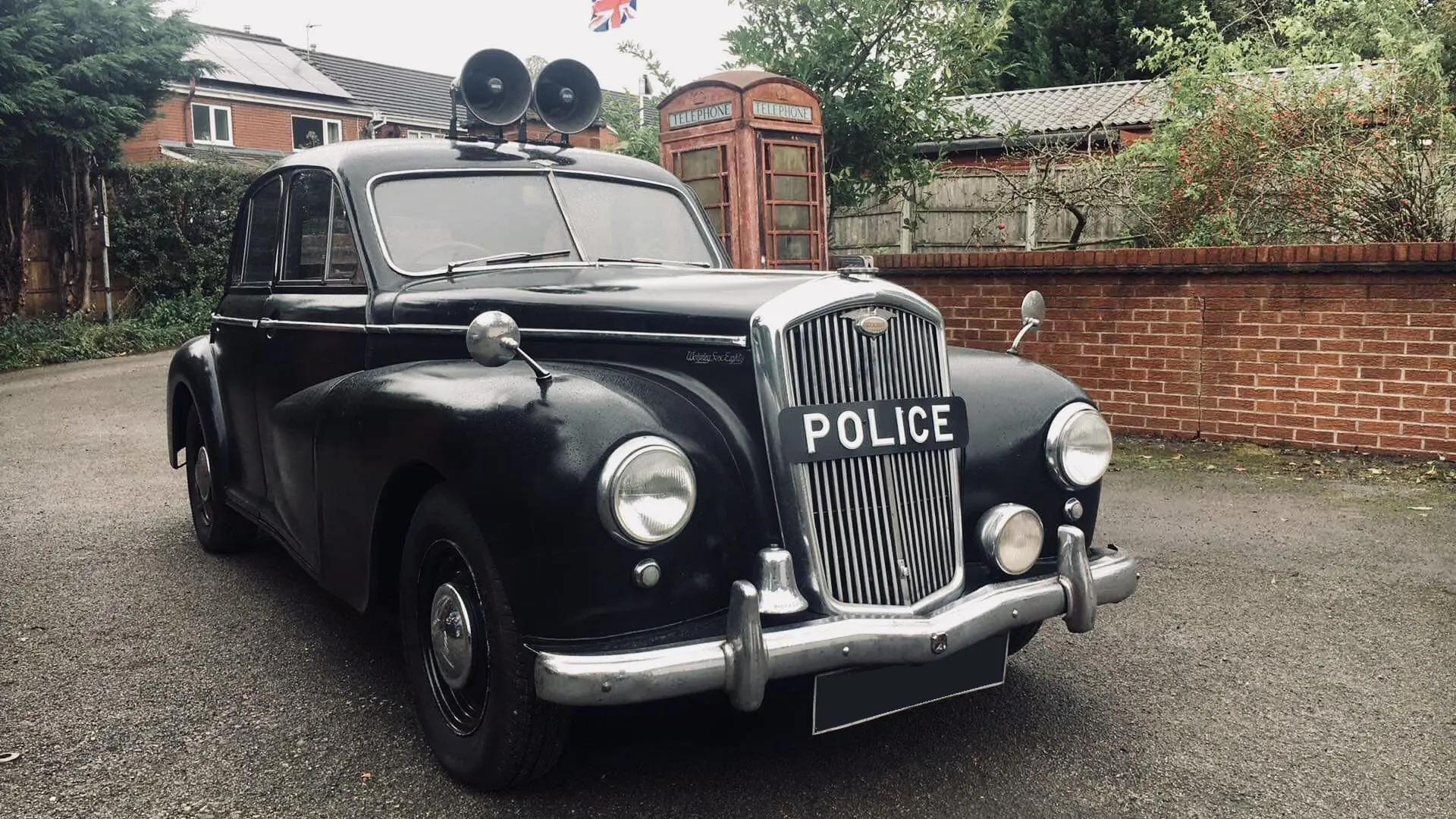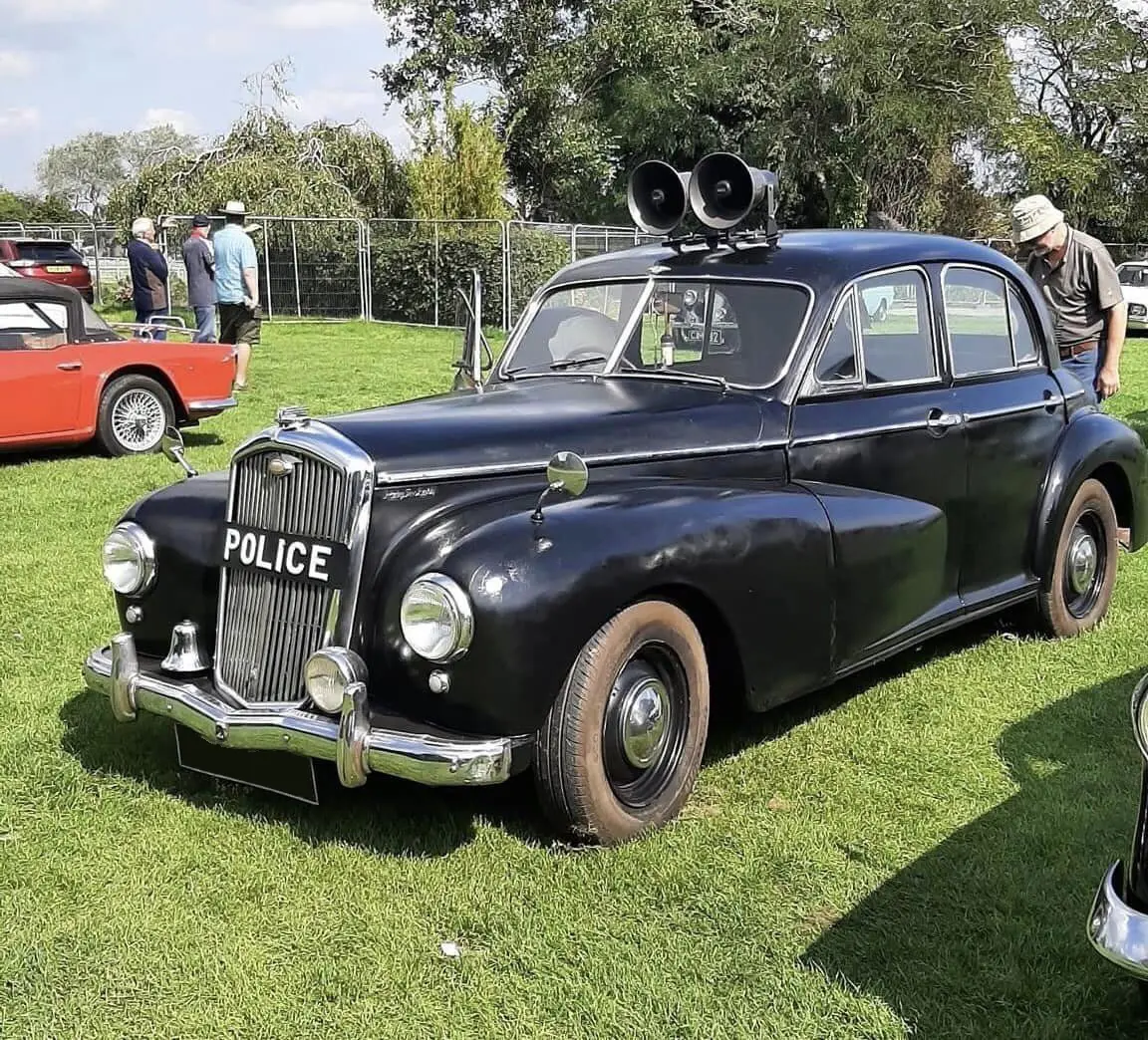Meet the Owner - Joseph Lane and his Police Wolseley 6/80
26 September 2023
Our old friend Joseph Lane has recently acquired another Wolseley to join his 6/90 and the other members of his classic police car fleet. His 1953 6/80 is the sort of vehicle that seems to dominate the output of Talking Pictures Television; a car associated with such black & white film dialogue as “You got me bang to rights Inspector!’ and “Dash it all, Superintendent – I was dining at the Blue Parrot nightclub that evening!”.
This year sees the 75th birthday of the Minor, but, as discussed in an earlier blog, it was the entry-level model in a new five-car Morris and Wolseley line-up from the Nuffield Group announced on the 25th October 1948. Just imagine the impact of seeing a 6/80 at the first post-war London Motor Show. Aside from the grille with its famous illuminated ‘ghost light’ it bore no similarity to the 18/85, for gone were the separate running boards and upright coachwork.

Instead, the latest Wolseley featured rather sleek bodywork with power from a 2.2-litre OHC engine. Naturally, leather upholstery, a heater, a telescopic steering column, fog, spot and reversing lamps were standard equipment in the car that represented “the happy mean between a car that is too small and one that is beyond the average price range” for £767 8s 4d. Better still, “Wit and distinction open more doors than wealth”, which seems to translate as “6/80 owners can look down on anyone driving a Ford Pilot”.
Autocar thought the 6/80 a “promising newcomer”. They also reassured their readers that it was “definitely British and recognizably Wolseley” despite those modern lines. One charming detail was that the courtesy lamps operated from the rear instead of the front doors; Nuffield evidently expected many 6/80s to be chauffeur-driven. The top speed was a respectable 82 mph, although the motorist would have to make good use of the four-on-the-column gear lever.

Nuffield built 24,886 cars between 1948 and 1954, of which over 10,000 were destined for export. Their most famous domestic role was as a police car. Forces across the UK employed the 6/80, notably the London Met. who is believed to have used more than 1,000 Wolseleys. https://680mo.org.uk/ notes their Wireless Area Cars “handled the duties associated with the 999 emergency call system, and all other routine patrolling in each district”. ‘Motor Traffic Patrol’ 6/80s wore distinctive twin loud-hailers on the roof.
The Met. used different tyres and modified suspension (to make the steering lighter) on the Traffic 6/80s. In the cabin, the wireless operator was responsible for monitoring the re-calibrated speedometer, dealing with messages, operating the loud-hailers, and sounding the bell. Police Wolseleys also had a heavy-duty dynamo and two six-volt batteries under the rear seat; civilian cars had a single 12-volt battery under the bonnet. In 1955 the Met. collaborated with the AA to produce this splendid film of a rather formable sergeant piloting a traffic 6/80 around Hendon - https://www.youtube.com/watch?v=3iGZ1rX_EpQ
Met. 6/80s remained in service until 1961, long after the end of production. J’s Wolseley dates from 1953 and is “an ex-Bedfordshire CID car” in London Met. livery. He greatly looks forward to 6/80 motoring, not least because he is a devoted fan of post-war British cinema. The black Wolseley of Justice was as much a part of the 1953-61 Scotland Yard B-film series as your host Edgar Lustgarten intoning, “And it was here the villain made his fatal error”.
According to one advertisement, “When you see a Wolseley 6/80 outside a house, you can place its owner as a man whose standing with his neighbours is high”. Unless, perhaps, it was black, had a bell on the front bumper and wore ‘Police’ signs fore and aft - “just a few questions, sir…”.
With Thanks To Joseph Lane and https://680mo.org.uk/
